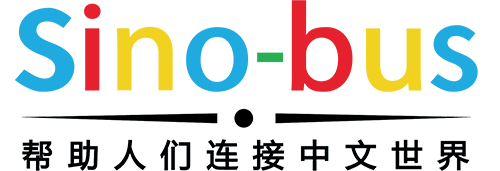Whether students should be taught to recognize Chinese simple words has become a hot topic.
In fact, the dispute between traditional and simplified characters is also a subcultural topic that is frequently discussed on the Internet.
You may have seen this kind of joke: "Relatives don't meet (kiss), listen without ears (listening), harvest has no food (feng), switch has no door panel (switch), sleepy don't close eyes",
this has become the simplified Chinese character " "Faults".
The general idea is that after the simplification of traditional Chinese characters, many flaws have been left, and many of the good meanings in the literal meanings have been wiped out.
In fact, being able to recognize Chinese simple words is certainly convenient for getting closer to traditional Chinese culture and for reading traditional literature,
but doesn’t it have to be a hassle for children? Do you have to enter the classroom to show your emphasis on traditional culture?
In fact, hobbies are a kind of logic, and teaching is also a kind of logic. Anything that can be tested will turn into another "perverted" logic.
Whether it’s called Mathematical Olympiad, English, ancient poetry, or “recognizing the simple and the complex”.
Before getting to know Chinese simple words, let’s test the standard way of writing simplified Chinese characters:
Did you know that the “small” above the “point” character cannot be written as a hook?
Isn't the first stroke of the word "anti" written horizontally?

The vertical character of "no" must be on the left side?
Should there be a "人" written across the four horizontal lines below the word "美", or a "王" above it and "大" below? ...
I believe that even adults who have studied in college have already been tricked by this time.
Look, you can’t even understand the “standard characters” in primary school, how can you guide children to “write in simplified and understand traditional”?
In fact, under the current baton of "standardizing Chinese characters", the task of learning Chinese characters for primary school students is already heavy enough.
Not only must they be able to write standardized Chinese characters, but they must also remember stroke order, word matching, and the "corners and corners" in them.
Does your little brain have the brain capacity to learn this?
You must know that "recognizing Chinese simple words" is not as simple as adding a traditional Chinese character next to a simplified Chinese character.
There is not a one-to-one correspondence between simplified Chinese characters and traditional Chinese characters.
When the "First Batch Simplified Character List" was first announced, multiple traditional Chinese characters were merged into one simplified character.
There are two traditional Chinese characters corresponding to "fa": one is hair and the other is hair. The former refers to hair, and the latter refers to getting rich. The two are not the same character.
It can be imagined from this that just to understand Chinese simple words, you have to memorize a large number of knowledge points.
This is a quite painful process, and memorizing the "four ways of writing Hui characters" is really of little significance.
In the history of the evolution of Chinese simple words, there are countless examples of mixed use, misuse, borrowing, and mistakes.
There is no need to argue. It is not the simplified and traditional characters that have caused the "knowledge gap" of Chinese characters.
For example, in seal script, meat and moon are two characters with similar shapes, and there are many characters with these two characters as radicals.
For example, the word "rou" means: spleen, skin, liver, and buttocks; the word "moon" means: Ming Dynasty's expectations.
After Chinese characters entered the official script stage, it was difficult and unnecessary to distinguish between the radical "月" and the radical "肉",
So the two radicals with completely different origins and meanings were mistakenly turned into the same radical. "Moon meat".
It's all mixed up, except for those who specialize in philological research, it is really necessary to understand: Why does the "moon" appear under the "butt"?
I think that the current teaching and implementation standards for "standardizing Chinese characters" may be too "standardized" and may even be "rigid",
which will affect young people's access to traditional culture and the ability to read traditional Chinese characters.
We might as well give traditional Chinese characters an important role in humanities and calligraphy. A certain amount of "flexible space" is left in terms of creation and store promotion.
In fact, language committees in many places have come out to enforce the law and ordered stores to change their signboards to traditional Chinese characters in the name of "standardizing Chinese characters."
For another example, many primary school Chinese language assessment points focus on the details of "standardizing Chinese characters": the "small" above the character "point" cannot be written as a hook,
and "忄" must be written first...
In short, those who advocate allowing primary and secondary school students to learn traditional Chinese characters may have underestimated the "extensiveness and profoundness" of Chinese characters, and may have underestimated the rigor of the current "standardized Chinese character" teaching.
For Chinese parents who send their children to Chinese schools, they actually have ample choices between learning traditional Chinese characters and simplified Chinese characters.
However, it is not that simple for Chinese schools, because it involves not only cultural factors such as background and philosophy, but also teaching costs. After all, the two systems of traditional Chinese and simplified Chinese are an objective existence.
The reality is that hundreds of American Chinese schools must make a choice between traditional Chinese and simplified Chinese. Many heads of Chinese schools lament that it is difficult to have both “supporting simplified” and “supporting traditional” Chinese teaching.
The early Chinese schools were basically founded by immigrants from Taiwan, and naturally used traditional Chinese teaching. However, with the increase in immigrants from mainland China, many Chinese schools had to "advance with the times."
For example, in New York, some long-established Chinese schools have been using Chinese phonetic notation and traditional Chinese characters. In 2007, during the debate on "traditional and simplified", some schools took a compromise route and used Chinese pinyin for teaching, but still retained the traditional fonts.
However, there are also some American Chinese schools that adopt "one country, two systems" in Chinese teaching. Students from mainland China and students from Hong Kong and Taiwan are taught separately.
Just like a new species always affects the surrounding ecological environment, the increase in the number of immigrants from mainland China is also changing the Chinese social culture in the United States. Kangjun Chinese School, the oldest and largest Chinese school in Northern California, passed the decision to implement dual-track education three years ago.
Traditional and Chinese simple words will be opened for each grade from grades one to four. This school was once the local Chinese school that adhered most closely to the teaching of traditional Chinese characters.
Nowadays, the number of schools introducing simplified Chinese teaching is increasing. If you want to know more about Chinese simple words, please feel free to join us!


